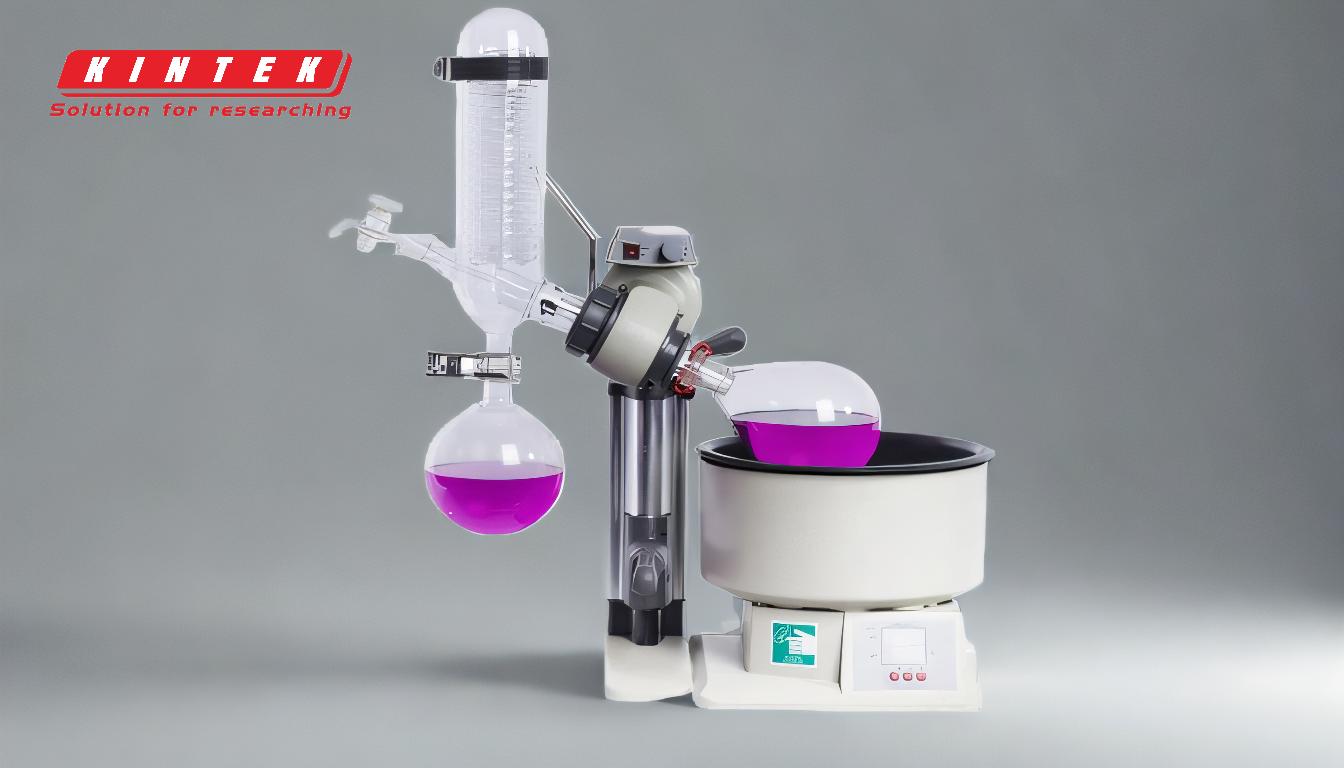The pressure required for a rotary evaporator when working with ethyl acetate depends on the desired vapor temperature and the relationship between pressure and boiling point. Ethyl acetate, a common solvent, has a boiling point of 77.1°C at atmospheric pressure. However, in a rotary evaporator, the pressure is reduced to lower the boiling point, allowing for gentle and efficient distillation. For ethyl acetate, the pressure typically ranges between 100 and 200 mbar, depending on the specific vapor temperature desired. Lower pressures (e.g., 100 mbar) allow distillation at lower temperatures, which is ideal for heat-sensitive compounds, while higher pressures (e.g., 200 mbar) can be used for faster distillation when thermal sensitivity is less of a concern.
Key Points Explained:

-
Relationship Between Pressure and Boiling Point:
- In a rotary evaporator, reducing the pressure lowers the boiling point of the solvent. This ensures that distillation occurs at lower temperatures, which is particularly important for thermally sensitive compounds.
- For ethyl acetate, the boiling point decreases as the pressure is reduced, allowing for efficient evaporation without overheating the sample.
-
Recommended Pressure Range for Ethyl Acetate:
- The typical pressure range for ethyl acetate in a rotary evaporator is between 100 and 200 mbar.
- At 100 mbar, ethyl acetate will boil at a lower temperature, making it suitable for heat-sensitive materials.
- At 200 mbar, the process is faster but operates at a slightly higher temperature.
-
Temperature Considerations:
- The bath temperature should be set about 20°C higher than the desired vapor temperature to ensure efficient evaporation.
- For ethyl acetate, if the desired vapor temperature is 30°C, the bath temperature should be set to around 50°C.
- The condenser temperature should be set about 20°C lower than the vapor temperature, typically around 0°C for optimal condensation.
-
20/40/60 Rule:
- This rule is a guideline for setting up a rotary evaporator:
- Bath temperature: 20°C higher than the vapor temperature.
- Condenser temperature: 20°C lower than the vapor temperature.
- Pressure: Adjusted to achieve the desired vapor temperature.
- For ethyl acetate, this ensures a balance between efficient distillation and protection of heat-sensitive components.
- This rule is a guideline for setting up a rotary evaporator:
-
Tools for Pressure Adjustment:
- A low-vacuum pump or sink aspirator is sufficient for achieving the required pressure range for ethyl acetate.
- A manometer can be used to monitor and adjust the pressure accurately.
- A distillation nomograph can help determine the exact pressure needed for a specific vapor temperature.
-
Avoiding Bumping:
- Bumping occurs when the solvent boils too vigorously, leading to splashing and potential sample loss.
- Lower pressures and temperatures reduce the risk of bumping, making the process more controlled and efficient.
-
Practical Example:
- If you want to distill ethyl acetate at 30°C, the pressure should be set to approximately 123 mbar.
- The bath temperature should be around 50°C, and the condenser temperature should be set to 0°C.
- This setup ensures gentle and efficient distillation while minimizing the risk of bumping.
By following these guidelines, you can optimize the rotary evaporation process for ethyl acetate, ensuring efficient and safe distillation tailored to your specific needs.
Summary Table:
| Parameter | Details |
|---|---|
| Pressure Range | 100-200 mbar |
| Boiling Point at 1 atm | 77.1°C |
| Bath Temperature | 20°C higher than vapor temperature (e.g., 50°C for 30°C vapor temperature) |
| Condenser Temperature | 20°C lower than vapor temperature (e.g., 0°C for 30°C vapor temperature) |
| Tools for Pressure | Low-vacuum pump, sink aspirator, manometer, distillation nomograph |
| Avoiding Bumping | Use lower pressures and temperatures for controlled evaporation |
Need help optimizing your rotary evaporation process? Contact our experts today for tailored solutions!













